Key takeaways:
- Budgeting in film production requires balancing creative ambition with financial realism to enhance the project’s overall quality.
- Flexibility in budgeting is crucial for adapting to unexpected expenses, ensuring a smoother production process.
- Collaboration with the crew during the budgeting process can uncover hidden costs and foster innovative solutions, improving both financial planning and teamwork.
- Investing in skilled professionals and quality equipment directly impacts production success, emphasizing the importance of thorough cost estimation.

Understanding film production budgeting
Budgeting for film production is not just about crunching numbers; it’s about crafting a vision with financial discipline. I recall my first experience with budgeting on a short film project—I had to balance the thrill of storytelling against the stark reality of costs. That pressure taught me that every decision, from talent to location, impacts the budget and ultimately the final product.
As I navigated budget allocations, I often found myself wondering: what would happen if I overspend on one aspect? I learned that prioritizing expenses based on the film’s core needs allowed me to allocate resources more wisely. For instance, investing in quality sound design made a significant difference, even in a low-budget film, reinforcing the idea that strategic spending can elevate the entire project.
Ultimately, each time I create a budget, I approach it as a creative collaborator. It’s about striking a balance between artistic ambition and financial realism. While it may seem daunting at first, aligning your budget with your creative goals can be incredibly rewarding. I’ve found that when you invest time in understanding your budget, it empowers not just your project, but your growth as a filmmaker.
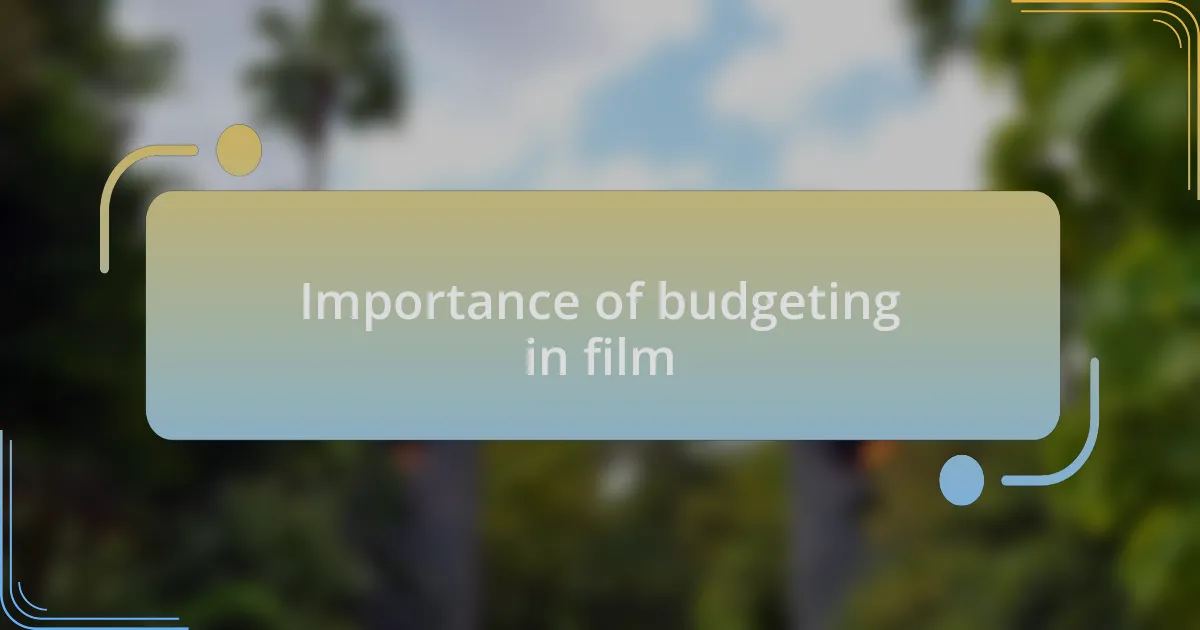
Importance of budgeting in film
Budgeting serves as a roadmap in film production, guiding every aspect of the project. I remember a time when I thought I could wing it without a detailed budget. The chaos that followed taught me a tough lesson: without a clear financial plan, creativity struggles to flourish. It’s almost like trying to navigate without a compass—you can get lost quickly.
I’ve seen firsthand how a well-structured budget not only keeps the project on track but also boosts team morale. During a particularly challenging shoot, I allocated funds for a proper lunch catering service. What a difference it made! Suddenly, the crew was energized and focused, proving that budgeting isn’t just about dollars and cents; it influences the creative environment significantly.
Moreover, having specific line items for each department fosters accountability. I’ve had experiences where assigning budget responsibilities to department heads led to innovative solutions. When they know their limits, they are more likely to think outside the box. This approach also raises the question: how can we empower our teams while staying financially aware? Balancing creativity with fiscal responsibility enhances not only the production but the collaborative spirit.
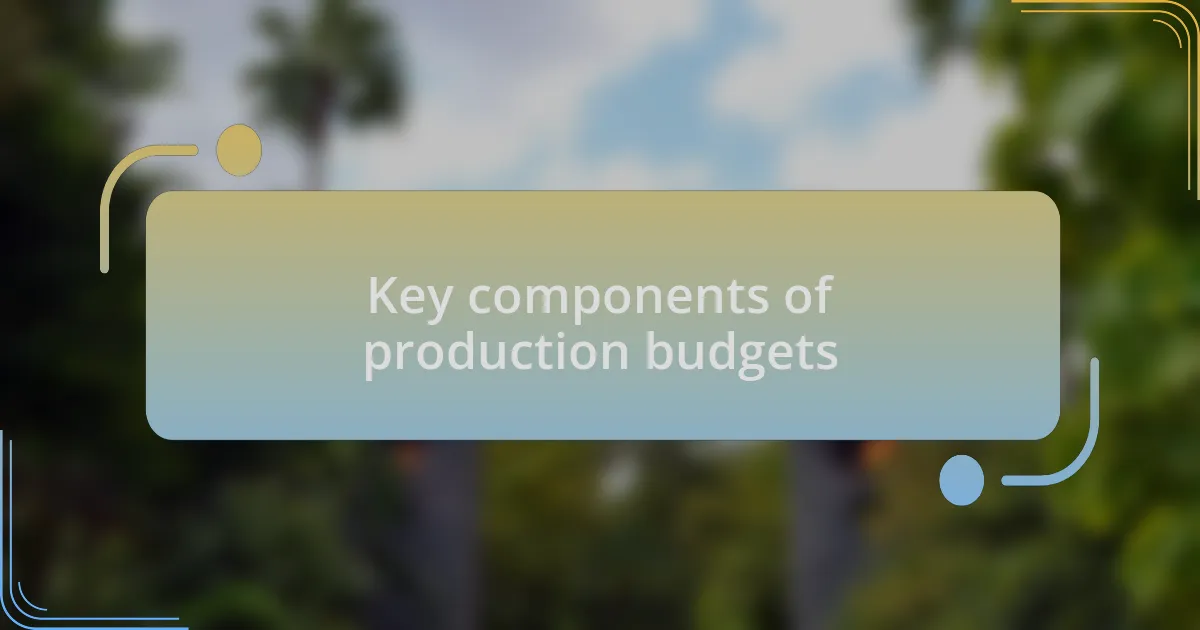
Key components of production budgets
When I think about the key components of production budgets, labor costs instantly come to mind. They can often make up a significant portion of the total budget. I remember a shoot where we underestimated crew rates. It turned out to be a wake-up call, reminding me that investing in skilled professionals is crucial for a successful production. Have you ever thought about how much creativity can suffer when the crew is overworked and underpaid?
Another vital aspect is the allocation for equipment rentals. I once overlooked this line item, believing we could borrow what we needed. It’s painful to admit that some borrowed gear didn’t meet our creative standards, leading to last-minute, costly rentals. This experience taught me that budgeting for top-tier equipment can actually save time and enhance the quality of the final product. Wouldn’t you agree that high-quality production value is a key factor in captivating an audience?
Finally, don’t underestimate the importance of contingency funds. I had a project where unexpected expenses popped up—everything from location changes to weather disruptions. Allocating a small percentage of the overall budget for contingencies saved us from panic and allowed us to proceed smoothly. It made me realize that flexibility in budgeting can be a lifesaver. Have you built flexibility into your budget plans? Balancing certainty with unpredictability is essential for any successful production.
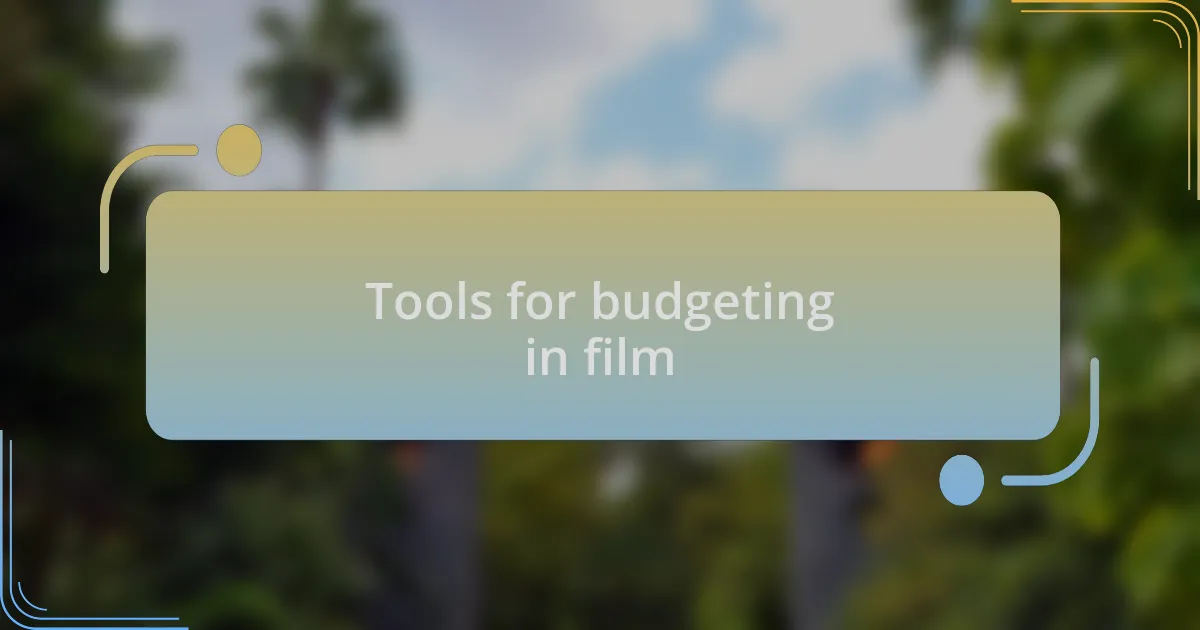
Tools for budgeting in film
When it comes to budgeting in film, I’ve found that using software tools can really streamline the process. I remember my early days when I relied heavily on spreadsheets, which often turned chaotic with endless rows and calculations. It wasn’t until I discovered dedicated budgeting software that I realized how much easier it is to track expenses and make adjustments in real-time. Have you ever experienced the headache of managing a budget manually?
One tool that has truly transformed my approach is Movie Magic Budgeting. This software allows for detailed categorization, which I appreciate, especially when it comes to managing individual line items. I recall a production where we had multiple departments, and the ability to visualize each section made all the difference. It helped foster clear communication among team members, ensuring everyone was on the same page. Isn’t it incredible how the right tool can enhance teamwork and efficiency?
In addition to dedicated software, I’ve also turned to collaboration apps like Google Sheets for real-time updates with my team. This not only allows for instantaneous edits but also creates a shared space for feedback and discussion. I remember a particular shoot where open dialogue about the budget led to innovative solutions, like repurposing equipment rather than renting new items. Reflecting on those moments, I believe that leveraging collaborative tools can spark creativity while keeping everyone accountable. Have you thought about how versatile budgeting tools can enhance both your planning and creativity?
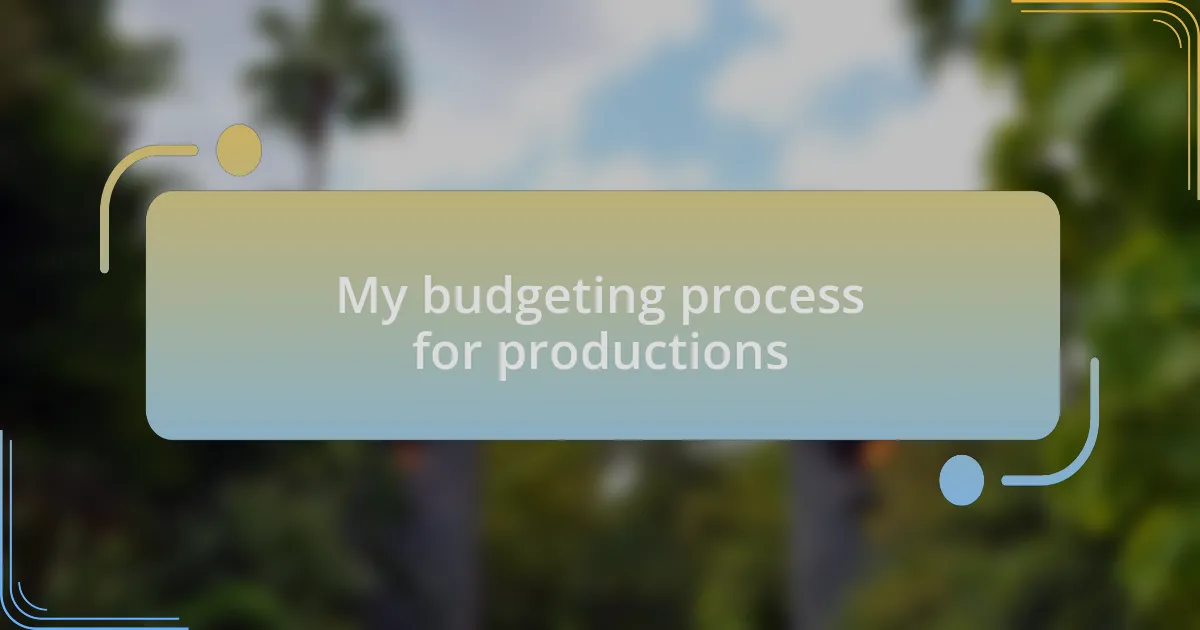
My budgeting process for productions
My budgeting process for productions often begins with a clear vision of the project. I sit down with the script and break it into sections, estimating costs for each element. I recall a time when I underestimated location expenses, thinking we could wing it. That oversight led to scrambling later on, reminding me just how crucial it is to be thorough from the start. Have you ever faced unexpected costs that changed your entire budget?
Once I’ve developed a rough budget, I share it with my crew for feedback. This collaboration has often led to the discovery of hidden costs I hadn’t considered. In one instance, our cinematographer suggested alternative lighting techniques that not only fit the vision but also saved a significant chunk of the budget. Isn’t it fascinating how a fresh perspective can reshape our financial planning?
As the production progresses, I continually reassess the budget, making adjustments as necessary. I vividly remember a shoot where we faced weather challenges that forced us to rent equipment last minute. I had to adapt quickly, which meant pulling funds from contingency allocations. It was a tense moment, but it taught me the importance of flexibility in budgeting. How do you handle those curveballs that life throws at your production?

Challenges I faced while budgeting
Budgeting for productions often brings unexpected hurdles. I remember a project where I meticulously planned every element, assuming I had everything under control. Yet, when the costs for talent and crew exceeded my initial estimates, I felt a wave of panic wash over me. How often do we overlook the human factor in our budgets?
Another challenge that consistently pops up is managing vendor relationships. There was a time when I relied on a vendor for equipment rental, only to find out at the last minute that their pricing had skyrocketed due to increased demand. This left me scrambling to find alternatives and rethink my budget allocation. It made me realize that good communication with vendors can save not just money but also a lot of headaches. Have you found yourself in a similar tight spot?
Then there are the unforeseen expenses that come out of nowhere. I can recall the emotional rollercoaster during a production when one of our key locations suddenly became unavailable, and we had to pivot quickly. The scramble to secure a new venue required a major reallocation of our funds, which was nerve-wracking but also an invaluable lesson in resilience. How do you stay calm and resourceful when the unexpected hits?
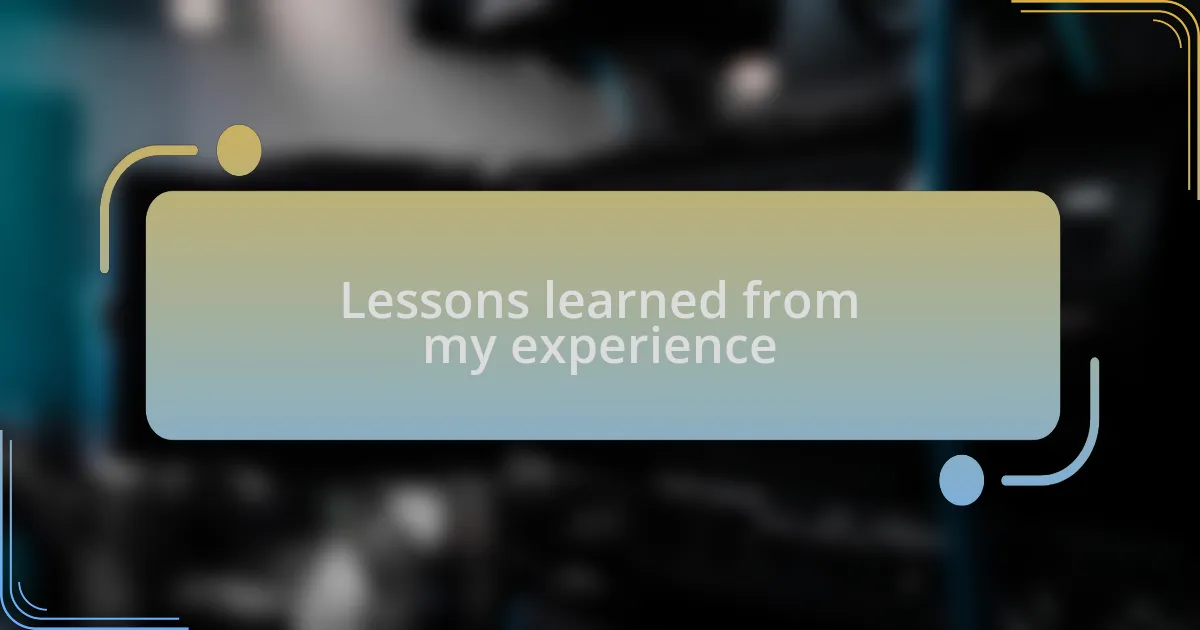
Lessons learned from my experience
When I reflect on my journey with budgeting for productions, one of the key lessons that stands out to me is the importance of flexibility. I recall a project where I thought I had accounted for every variable, only to be blindsided by a sudden increase in location fees. I had to quickly adapt my expectations and find creative solutions, reminding me that a rigid budget can lead to stress and frustration. Isn’t it interesting how adaptability can often save the day?
Another crucial learning experience happened during a large-scale production when I was adamant about sticking to my original budget. Unfortunately, this approach didn’t factor in the need for contingency funds, and I faced significant stress when unexpected costs arose. It dawned on me that setting aside a small percentage for unforeseen expenses isn’t just practical; it’s vital for maintaining peace of mind throughout the process. Have you ever found yourself wishing you had planned differently?
Lastly, I discovered that collaboration fosters a more realistic budgeting process. On one project, I opened up discussions with my team about financial constraints, and their input helped unearth potential savings I hadn’t considered. It felt empowering to involve the talent and crew in this aspect. How often do we forget that teamwork can lead to better outcomes, not just creatively but financially as well?